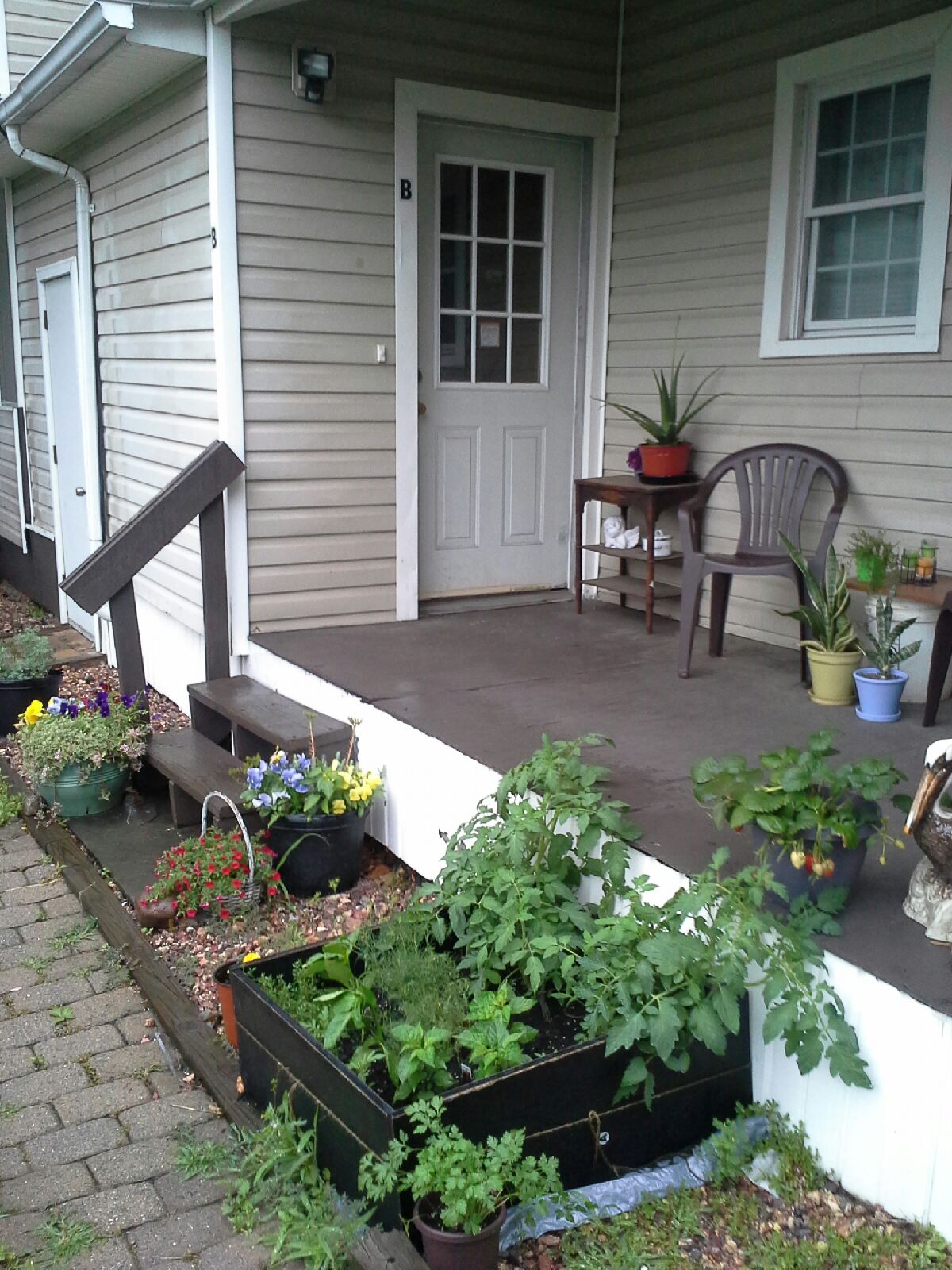Many of us who live in the City of Rochester, especially near Center City, are faced with the challenge of a tiny yard. For mowing purposes, this challenge is a blessing, but if you have the heart of a gardener, it can be hard to imagine what to do with your small space. It’s even more of a challenge if the yard you have actually belongs to your landlord, or if you have no yard at all. However, gardening in a tiny space is not impossible. It takes some creativity, but even a fire escape can be turned into a full and beautiful garden.
First of all, don’t underestimate your space. When I first moved into my apartment in the South Wedge, I figured there was nothing I could do with my space because I thought it was too small without even taking the time to measure. Over the next year and a half, I realized that the bed space I was looking at was larger than I thought, and when I measured with my tape measurer, there was actually 12 square feet to work with. That is plenty of space for a garden! Unless you are planting a tree or shrub that will get very large, even plots as small as 4 square feet can provide ample space for a garden. The thing to consider when planting in a small space is that you probably won’t be able to give the recommended spacing between plants. If this is the case, you might have to use extra compost or fertilizer to keep the plants from competing for nutrients. For calcium-loving plants, like tomatoes and peppers, you can soak clean egg shells in water for about a week, and use that water to water your plants.
If your small space also doesn’t have exposed earth, don’t let this discourage you! You can put a raised bed or a planter pretty much anywhere, and it doesn’t have to be expensive (pretty much anything that can hold dirt can be used as a planter). Containers are also helpful if your space is rented because they are not permanent. Thrift stores are a perfect place to look for unused planters. Also, discarded dresser drawers and box-type shelves make great planters. A shelf that is at least 8- 12” deep, laid on its back with the shelves removed makes a great raised bed. Most plants can survive well in planters, even vegetables. Rule of thumb is, the deeper the planter, the better. However, keep in mind whether or not you will have to move the planter at any point. Dresser drawers work especially well because they are not water tight, so they have good drainage. Also, they can be stacked, or left in their original piece of furniture, which allows you to use vertical space.
Capitalizing on your vertical space is a great way to turn a tiny lot into a lush garden. Using your vertical space is especially important if you don’t have a yard, and are limited to a porch or fire escape. My neighbor had the great idea of building a backless shelf, on which she filled the top shelf with herbs, middle shelf is her vegetable garden, and then on the bottom she has potted perennials and annuals. You don’t have to build your own shelves either; again, I recommend visiting a thrift store (or even searching your neighborhood on trash night!) Hanging baskets work great for herbs, and I have even seen specialized hanging planter bags that work great for vegetables. They are sold at most garden retail centers, but if you’re on a budget you can try making your own using a canvas or burlap bag. Put one small hole in the bottom (for more drainage), and make staggered slits in the sides of the bag. Stick your veggies through the slits, with the roots on the inside, and then fill the bag with compost and potting soil. Hang the bag- the plants will right themselves and start growing upwards after a few days. It’s amazing that plants seem to know which way is up instinctually. They’re smarter than they look!
Hopefully, these tips will inspire you to fill every inch of your tiny yard with plants- it can be done! You may even find that you had more space than you thought, and your more land-endowed friends will all be jealous of your beautiful garden that doesn’t require a lot of walking (or mowing) to maintain. Smaller gardens generally require less time to take care of, too. For more ideas, or to find the perfect container, stop by the Garden Center. We are always happy to help!




